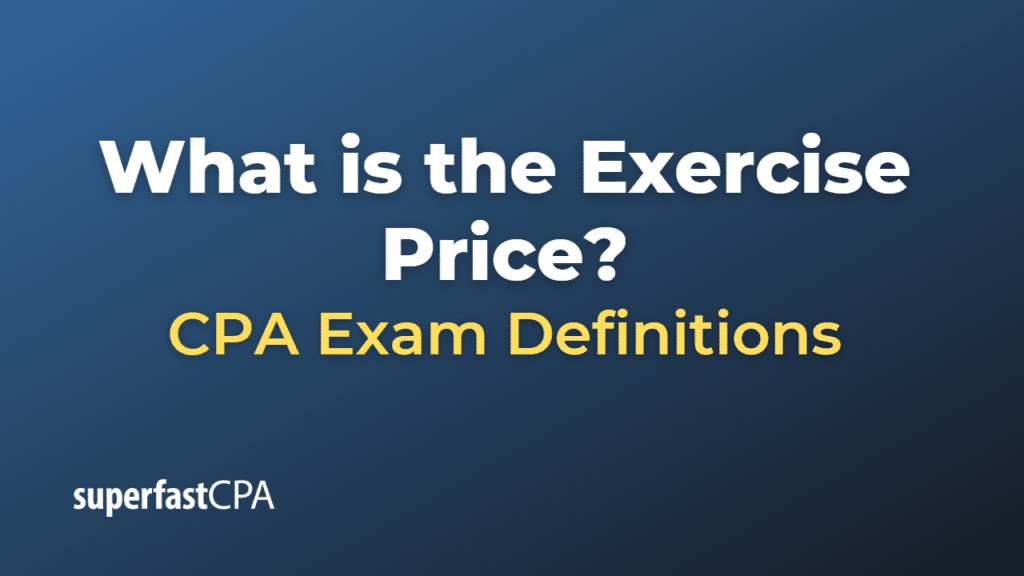Exercise Price
The exercise price, also known as the strike price, is the price at which an option contract can be exercised. In other words, it’s the set price at which the owner of the option can buy (in the case of a call option) or sell (in the case of a put option) the underlying security or commodity.
Here’s a bit more detail:
- Call option: This gives the holder the right, but not the obligation, to buy a specific amount of a particular security at a specified price (the exercise price) within a certain time period. If the market price of the security is above the exercise price, the call option is “in the money” and could be profitable to exercise.
- Put option: This gives the holder the right, but not the obligation, to sell a specific amount of a particular security at a specified price (the exercise price) within a certain time period. If the market price of the security is below the exercise price, the put option is “in the money” and could be profitable to exercise.
The exercise price is a fundamental component of an option’s value, along with other factors such as the volatility of the underlying asset, the time remaining until the option’s expiration, and the risk-free interest rate.
It’s important to note that options trading can be complex and involves significant risk, and it’s not suitable for all investors. It’s always recommended to thoroughly understand the concepts and risks before getting involved in options trading.
Example of the Exercise Price
Let’s consider an example using a call option.
Suppose you buy a call option for shares of Company XYZ. The option contract might specify an exercise or strike price of $50, and it expires in one month.
This means you have the right to buy shares of Company XYZ for $50 each at any time before the option expires, regardless of the market price of the shares.
Let’s consider two scenarios:
- The share price goes up: If Company XYZ’s shares rise to $60 before the option’s expiration date, you could exercise your option and buy shares for $50 each, even though they’re currently worth $60 on the open market. You could then immediately sell these shares at the market price, making a profit of $10 per share (minus the cost of the option and any transaction costs).
- The share price goes down or stays the same: If Company XYZ’s shares fall to $40, or stay at $50, it wouldn’t be beneficial to exercise the option. After all, why buy shares for $50 if they’re available on the open market for $40, or if you wouldn’t make any profit at $50? In this case, you would likely let the option expire worthless. Your loss would be the amount you paid for the option (the premium) plus any transaction costs.
This is a simplified example. Options can be complex and risky, and actual trading scenarios can be much more complicated. For instance, many options traders sell their options rather than exercising them, and many options trades involve multiple options contracts and complex strategies. Always understand the risks and mechanics of an options trade before entering into one.













